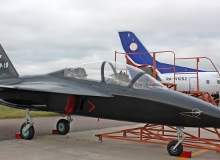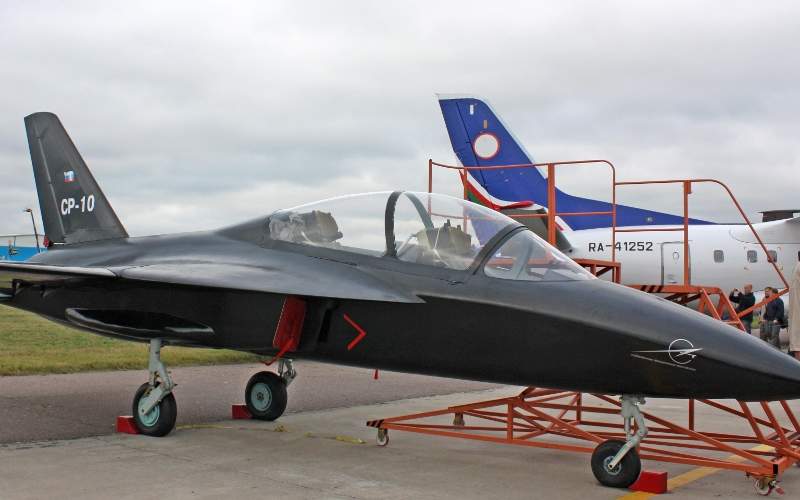Also known as CP-10, SR-10 is a twin-seat, single-engine jet trainer aircraft developed by Russian design bureau KB SAT. The aircraft can be used for elementary and intermediate levels of pilot training, as well as to enhance the piloting skills of military and commercial pilots. It is being developed for the Russian Air Force as well as export.
The prototype of the aircraft is fitted with a single forward-swept wing and completed its maiden flight test at an airfield near Vorotynsk, in the Kaluga region, in December 2015. During the first flight test programme, the aircraft’s qualitative performance including certain flight characteristics, stability and controllability, operation of systems and equipment was assessed. The aircraft is being tested further at the Gromov Flight Research Centre in Moscow.
KB SAT plans to build the first 16 SR-10 aircraft by the end of 2016, which will be followed by mass production of the aircraft in 2017. Russia’s Defence Ministry has allocated RUR2.5bn ($34m) for the SR-10 development project.
SR-10 light jet training aircraft design and development
The SR-10 supersonic light jet training aircraft is an intermediate trainer between the light Yak-152 and Yak-130 aircraft. It has an integrated aerodynamic design, which enables it to perform safe aerobatics.
The aircraft comes with a moderate wing of the reverse sweep that allows greater manoeuvrability. The wing is swept forward at a 10° angle. The exterior dimensions of the aircraft include a length of 9.59m (31ft 6in), height of 3.55m (11ft 8in), and wingspan of 8.40m (27ft 7in).
Built of modern composite materials, the aircraft uses a glider to reduce weight and increase the resource in the airframe. It has a very low operating cost compared to other machines.
The twin-seat aircraft was conceptualised in 2007, the schematic design and development were initiated in 2007, and the full-size layout of the aircraft was demonstrated at MAKS-2009 airshow at Zhukovsky in August 2009. The project encountered financial problems causing a delay in the development. The aircraft was finally rolled out in August 2015.
Cabin details of SR-10 aircraft
The SR-10 light training jet comes with a double cabin configured in tandem. It is equipped with ejection seats of Class 0-0 in the cabin to ensure safety for the crew at all altitudes and speeds of piloting. The cabin is facilitated with comfortable working conditions.
SR-10 aircraft engine and performance details
The prototype is powered by a single Ivchenko AI-25TL turbofan engine that generates a 16.87kN (3,790lb) thrust. The production aircraft are expected to be fitted with a more modern Russian engine, such as NPO Saturn AL-55.
The aircraft has a cruise speed of 520km/h, take-off speed of 190km/h, and landing speed of 185km/h. It has a maximum level airspeed of 900km/h and maximum manoeuvrable speed of 700km/h. The maximum range is 1,500km, and the service ceiling is 6,000m with a rate of climb of 60m/s. The minimum turn radius is 290m and the maximum bank rational speed is 7r/s.
The aircraft has a maximum take-off weight of 2,700kg and normal take-off weight of 2,400kg. The normal and maximum landing weight of the aircraft is 2,000kg.





